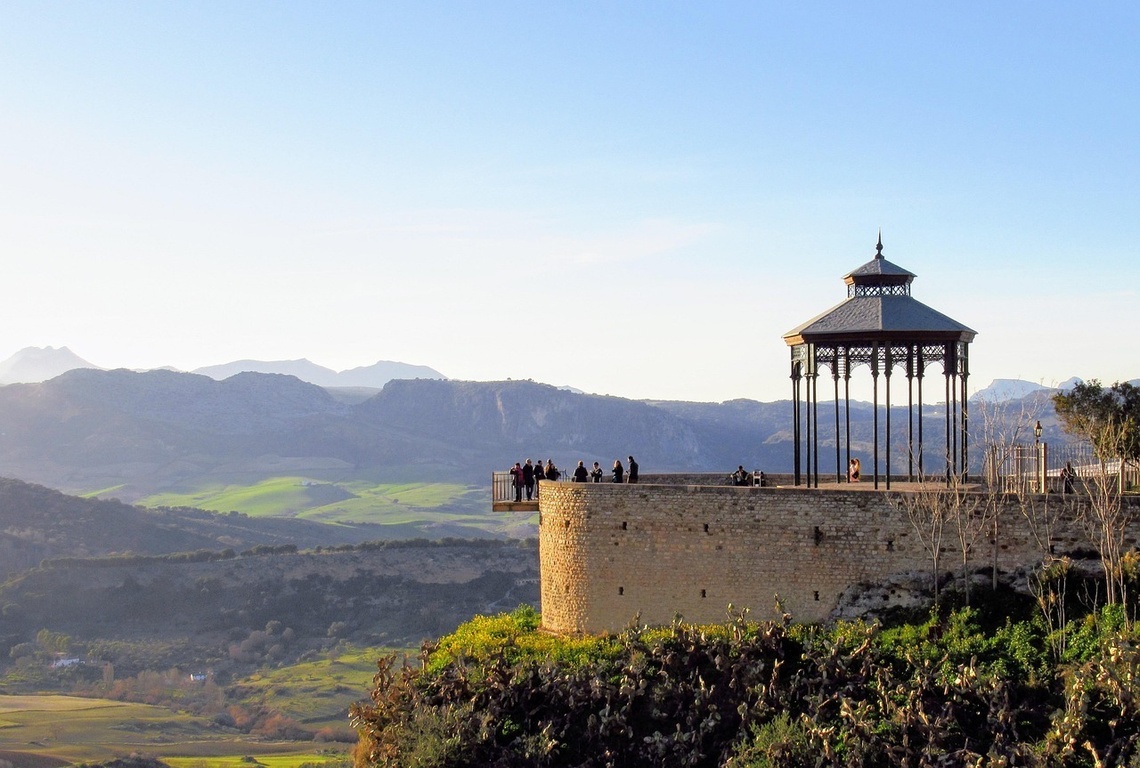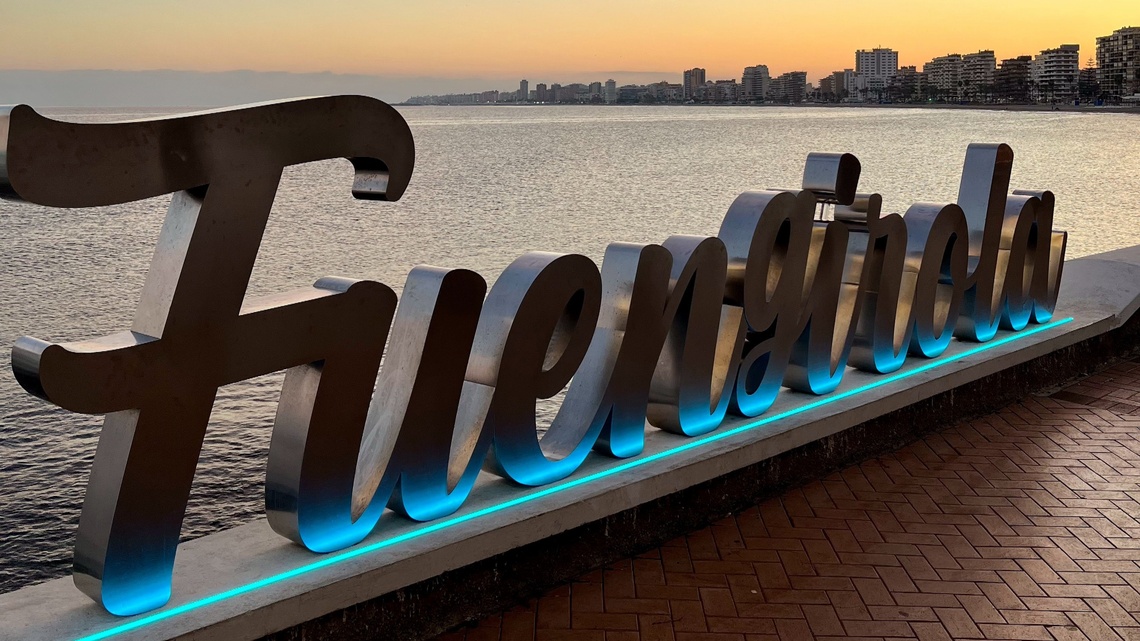Our Surrounding Area For your free time and leisure
- Urban Bus L1 50m
- Skate Park "Ignacio Echeverría" 150m
- Miramar Shopping Centre 230m
- Playa del Castillo 300m
- Marenostrum Concert Venue 650m
- Fuengirola Riverside Park and Open Area 700m
- Bioparc Fuengirola 1.4 km
- Aquamijas Water Park 1.6 km
- Renfe Cercanías Station 2 km
- Bus Station 2 km
- Sould Park and Marina 2.6 km
- Mijas Pueblo 11 km
- Puerto Marina 19 km
- Aqualand Torremolinos 21 km
- Marbella Centre 26 km
- Málaga Airport 27 km
- Málaga Centre 33 km
- Puerto Banús 36 km
- Caminito del Rey 80km
- Ronda 95km
-
1 / 5
Fuengirola // Useful information
HISTORY
Historical records show that it was Phoenician colonisers who founded Fuengirola, although it seems probable that Bastulos and other tribes had been present in this enclave halfway between Cadiz and Malaga. The Phoenicians set up a salted fish trading post at what they called Suel, and from there they traded with other Mediterranean cities. The Romans made Suel a federated municipality that was assigned by Augustus to the "conventus" of Gades (Cadiz).
ART
astillo Sohail (Sohail Castle), which was destroyed and rebuilt several times, is without a doubt the epitome of Fuengirola's monuments, both for its long and turbulent history and its unmistakable silhouette that has become the symbol of the city. The fortress is surrounded by powerful square towers and every part of it has been meticulously restored to prevent deterioration and to render it useful as a cultural and tourist resource since it has been converted into a remarkable open-air auditorium.
TOURISM
In Fuengirola the fiestas begin with Easter in a week that combines magnificent processions with the opening of the bathing season, since the region’s pleasant climate permits this except in the rare case of rain. On the eve of San Juan (23 June), Fuengirola locals burn "júas", while on the day of the Virgen del Carmen in July, the little neighbourhood of Los Boliches commemorates its maritime tradition with the procession of the Virgin, first on a fishing craft (a beautiful ritual performed in all coastal communities in Malaga) and afterwards through the streets of the town.
-
2 / 5
Malaga // Useful information
HISTORY
Faced with the Assyrian expansion and the progressive desertification of their territories, the Phoenicians from Tyre arrived on the coasts of Andalusia in around 800 B.C. and during that era founded Malaka. At first, it was more like a trading base around the port. Some time later the Greeks would found neighbouring Mainake, which would be destroyed by the Carthaginians, who in turn suffered from the power of Rome and were overcome in the late Third Century B.C. in the Second Punic War.
ART
Except for the Phoenician remains found in the Picasso Museum, the city’s most ancient monument is the Roman Theatre (100 B.C.) located at the foot of the Alcazaba. Its construction is similar to the Acinipo Theatre in Ronda. A part of its proscenium, an entrance gallery, traces of the orchestra and a large part of the cavea (16 metres tall and with a radius of 31 metres) have been preserved. Its stone was used for the construction of the Alcazaba and for the foundations of the Casa de la Cultura (House of Culture), a building that was torn down in 1995 to restore the ancient monument.
TOURISM
The holiday calendar of the city of Malaga revolves around two large and well-attended celebrations: Easter Week and the Feria de Agosto (August Fair). There are other festivities, however, that are deeply ingrained in popular tradition, such as Carnival in late February, Corpus Christi in late May or early June, the Virgen del Carmen celebration with its marine procession in mid-July, and the Fiesta Mayor de Verdiales (traditional "verdiales" music festival) on 28 December at the Venta de San Cayetano in the neighbourhood of Puerto de la Torre, where you can enjoy the traditional verdiales competition while sampling local wine and pork loin. Don’t forget that each neighbourhood organises its own fiestas.
-
3 / 5
Marbella // Useful information
HISTORY
The second largest city in the Province of Malaga was home to its first few settlers in the Palaeolithic Era, as is shown by weapons and tools discovered at Coto Correa in the area of Las Chapas and in Pecho Redondo Cave (a Neolithic site) in the southern foothills of the Sierra Blanca. Except for the Phoenician archaeological site of Río Real, there is no evidence of other civilisations living here up until the end of Carthaginian rule, which left traces in Río Verde, some five kilometres from Marbella.
ART
A poorly informed visitor would probably be surprised to find that this city - aside from having the largest concentration of golf courses in Spain and a large part of Europe, luxury hotels, leisure ports, unusually sophisticated restaurants and other establishments, a casino and excellent beaches all along its more than 20 kilometres of coast - has an extraordinarily interesting artistic and historical heritage and an old quarter that has so admirably withstood the invasion of the "latest fads" that have worn down so many areas.
TOURISM
Marbella's cosmopolitan character has not diluted the city’s festive traditions: perhaps the opposite. It has, however, diversified its entertainment options to cater to an ever more heterogeneous population. The San Bernabé Fair in the first week of June is the most deeply rooted celebration in folk tradition on Marbella's entire festive calendar. During the day, the fair is held in the Arroyo de la Represa, while at night the excitement moves to the fairgrounds. In both places a markedly Andalusian touch predominates, with foreign visitors joining in with the fun. Various districts hold their own festivals. Nueva Andalucía's are in the third week of July, Las Chapas's in August and El Ángel's in early October. In addition, all the neighbourhoods of Marbella stage popular fiestas and street parties.
-
4 / 5
Benalmadena // Useful information
HISTORY
The first human settlement in this municipality was established in the Upper Palaeolithic period, as proven by remains discovered in the caves of El Toro, Los Botijos and Las Zorreras. The Phoenicians established themselves in this region between the Eighth and Sixth centuries B.C., and there are also remains proving this in the coastal area. The Romans came later (a salted fish trading post at Benal-Roma and ruins of villas in Torremuelle and Capellanía), but it was the Arabs who provided the origin of the municipality’s name.
ART
In Benalmadena Pueblo is Santo Domingo Church, whose construction dates from the seventeenth century but which later underwent such a thorough reconstruction that nothing remains of its original structure. There is a magnificent viewing point next to the church, and in these same surroundings, the architect César Manrique designed the Jardines del Muro (El Muro Gardens), which command a very wide view with the sea as a backdrop.
TOURISM
Benalmadena's festive calendar is ample enough to satisfy all tastes and interests. It includes every sort of event ranging from what might be called highly cultured to those that are more participatory and popular, from sports to verbenas (traditional street parties), and from religious to the purely entertaining.
-
5 / 5
Torremolinos // Useful information
HISTORIA
The first human settlements in this municipality date back no less than 150,000 years. The nine human skulls found in the caves of El Tesoro, Los Tejones, El Encanto and Tapada date this far back. These caves no longer exist but they used to be at Punta de Torremolinos, the current Castillo de Santa Clara, where clay vessels, axe heads, necklaces, bracelets and rings were also found. Neolithic remains (5,000 B.C.) have also been found from what, according to the historian Juan Temboury, was a Mesopotamian settlement here. These people would have found an excellent climate, natural shelters and abundant water, game and fish.
ART
Due to its proximity to Malaga and the fact that for so many years it was "just another neighbourhood" of the provincial capital, Torremolinos has no remarkable monuments of any great antiquity except for the Torre Pimentel (Pimental Tower). By way of compensation, however, it does have one of the most complete ranges of leisure options on the Costa del Sol, excellent sports and cultural infrastructure, some charming neighbourhoods, an impressive seafront promenade and some beaches whose quality has enabled it to maintain its position as a leading tourist destination.
TOURISM
Torremolinos, being a first-class tourism municipality, has a schedule of events that barely allows any time for rest. The first event is the Campeonato de Baile Retro (The Retro Dance Championship) held in the Príncipe de Asturias Auditorium during the last week in February. Couples over 50 years of age from all over Europe participate in this unusual competition that draws a very large attendance to the auditorium each day. The tango, waltz, two-step, salsa, rock and twist are some of the most common styles in this championship, which takes dancing to other parts of the city with events that don't conflict with the official event. The championship begins with a parade through the main streets of the town and this parade has broken two world records: the largest gypsy costume and bridal gown in the world.







